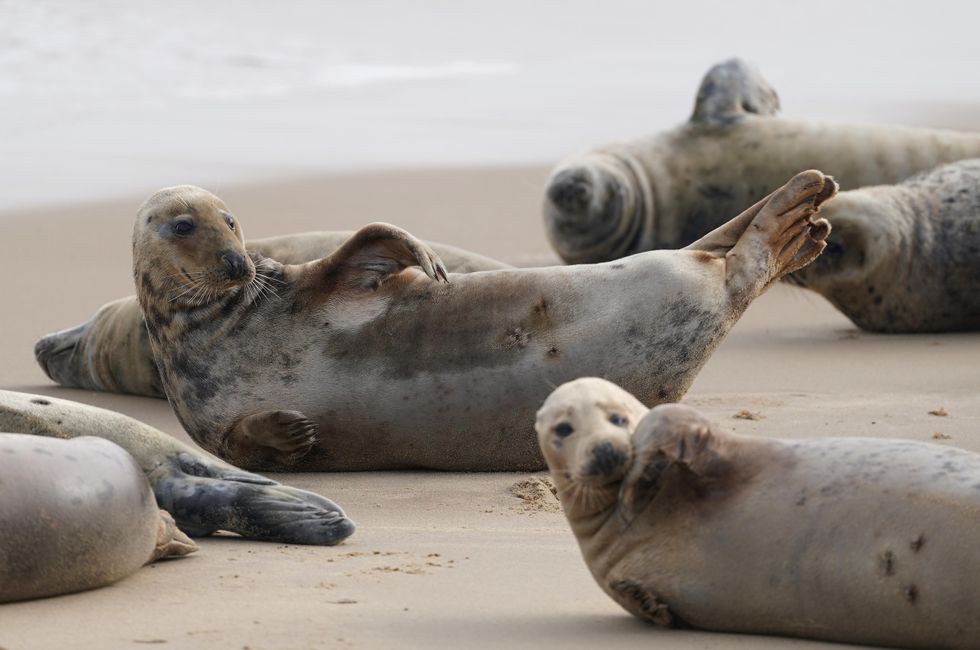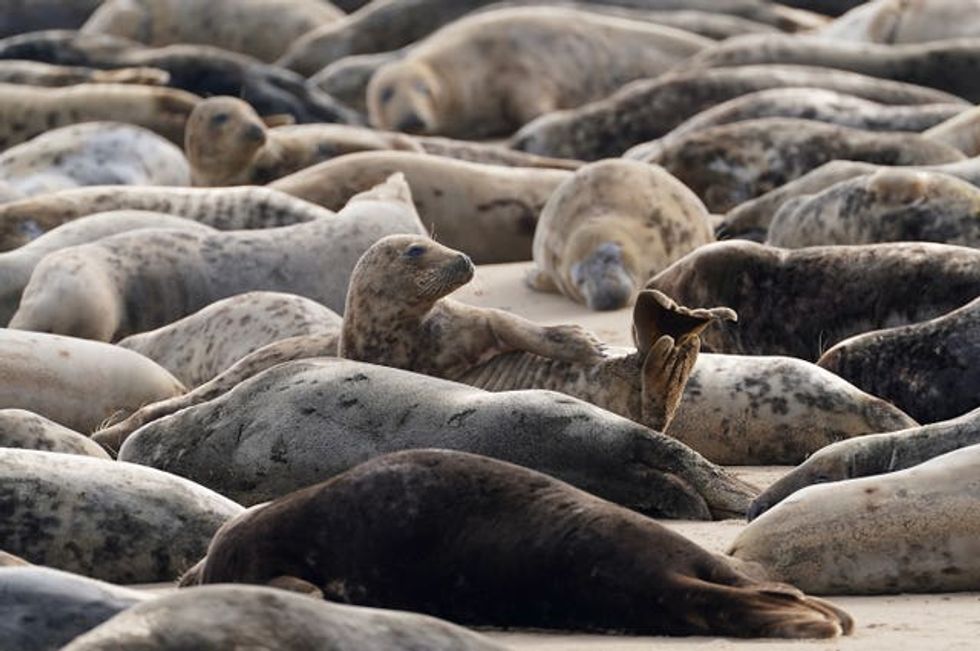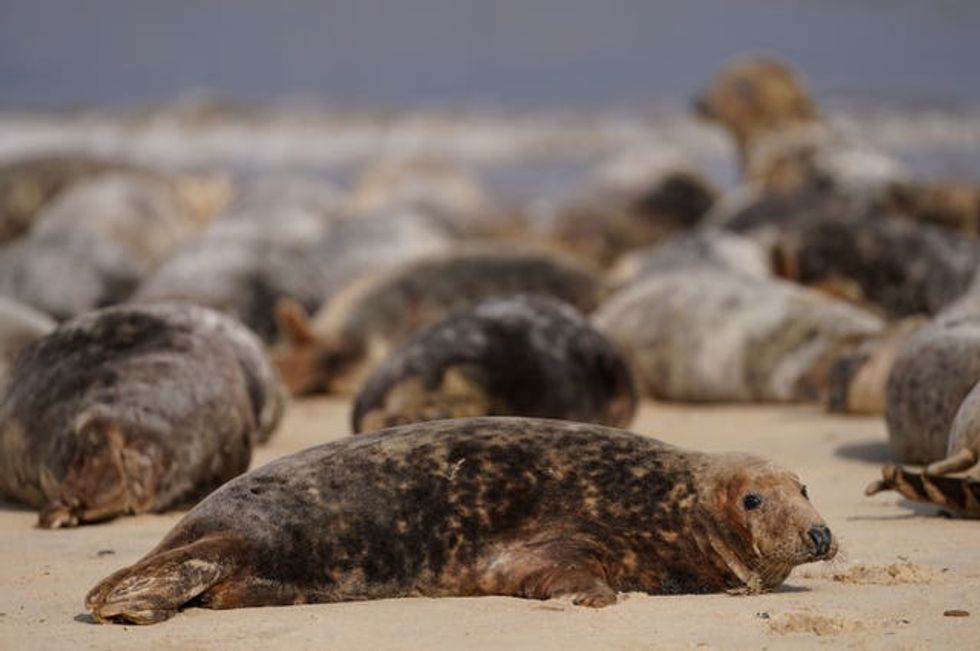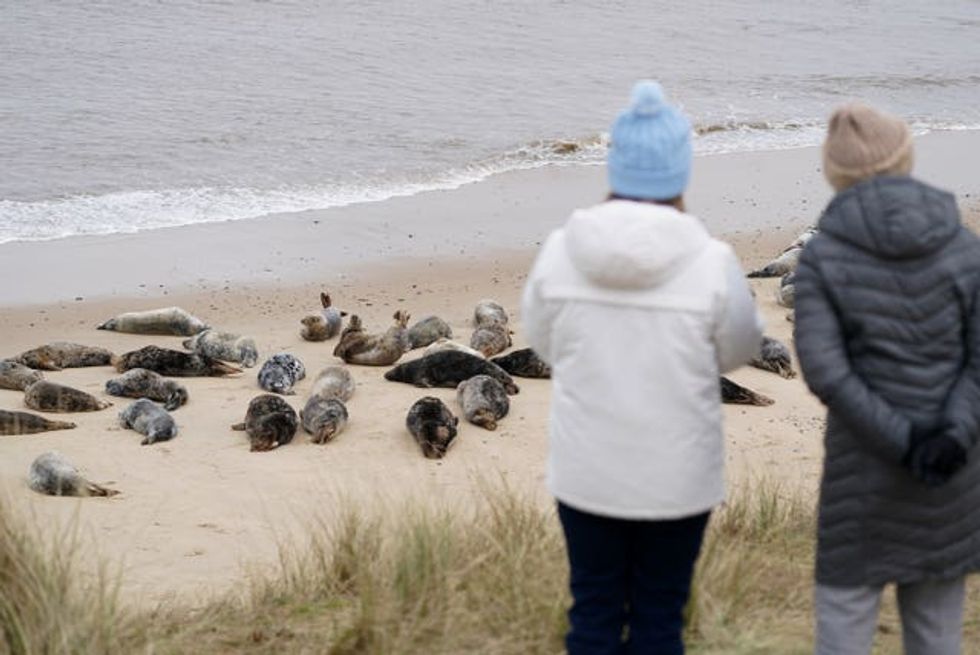
More than 2,500 grey seals have gathered on a beach to moult their worn-out winter fur and grow new sleek coats.
The blubbery mammals, at Horsey in Norfolk, cluster together to conserve heat during the annual process which begins around two to three months after breeding.
It takes roughly six weeks to complete, with seals ridding themselves of dead hair by scratching and rubbing against the sand or rocks.

Their fur, alongside their blubber, acts as insulation and as waterproofing, and makes them streamlined while swimming.
But seawater and parasites take their toll on a seal’s fur, and it is renewed annually.
The stretch of coast at Horsey has become an important breeding ground for grey seals, with 3,632 pups recorded in the last official count of the season in January.

The moult tends to start in February, continuing until April as early and later moulting seals overlap, according to the Friends of Horsey Seals group.
People are asked to keep a safe distance from the seals during the shedding and to keep dogs under control on a lead, or they risk harming the animals.

If a seal feels uncomfortable at the approach of people or dogs, they may head into the sea before the moult is complete and get dangerously cold.
Getting too close can also be dangerous for people as seals are wild animals with sharp teeth, Friends of Horsey Seals cautioned.













